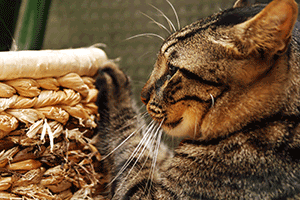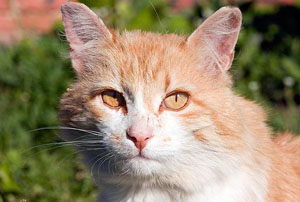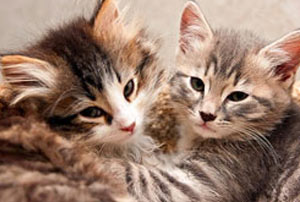Health Benefits Of Spaying And Neutering

Spayed and neutered cats no longer feel the need to roam to look for a mate. The result is that they stay home and have less chance of being involved in traumatic accidents such as being hit by a car. They also have a much lower incidence of contracting contagious diseases, and get into fewer fights.
In males, neutering decreases the chances of developing prostatic disease and hernias, and eliminates the chances of developing testicular cancer. It also reduces problems with territorial and sexual aggression, inappropriate urination (spraying) and other undesirable male behaviors.
In females, spaying decreases the incidence of breast cancer (the rate goes down to almost zero if the spaying is done before the first heat cycle). It eliminates the chance of developing a serious and potentially fatal infection of the uterus (pyometra) experienced by many mature, unspayed cats. Spay surgery also eliminates the heat cycle and the attraction of all available males to your yard.
The simple fact is that spaying and neutering greatly increases the lifespan of your pet and increases quality of life as well!
The Female Heat Cycle
Heat cycles in cats start as early as 6 months and occur every 3-4 weeks during spring through early fall. The gestation period for cats is 63 days. Female cats can become pregnant again as soon as 10 days after giving birth (while still nursing the first litter).
Population Facts
Each day 10,000 humans are born in the U.S. – and each day 70,000 puppies and kittens are born. As long as these birth rates exist, there will never be enough homes for all the animals. As a result, every year 4 to 6 million animals are euthanized because there are no homes for them.
Myths and Facts About Spaying and Neutering
Reprinted by permission of The Humane Society of the United States.
If you are seeking a spay or neuter program in your area visit our list of spay and neuter programs.
FACT: The truth is that most pets get fat and lazy because their owners feed them too much and don’t give them enough exercise.
FACT: Medical evidence indicates just the opposite. In fact, the evidence shows that females spayed before their first heat are typically healthier. Many veterinarians now sterilize dogs and cats as young as eight weeks of age. Check with your veterinarian about the appropriate time for these procedures.
FACT: Even if children are able to see a pet give birth—which is unlikely, since it usually occurs at night and in seclusion—the lesson they will really learn is that animals can be created and discarded as it suits adults. Instead, it should be explained to children that the real miracle is life and that preventing the birth of some pets can save the lives of others.
FACT: So is at least one out of every four pets brought to animal shelters around the country. There are just too many dogs and cats—mixed breed and purebred.
FACT: Spaying or neutering does not affect a dog’s natural instinct to protect home and family. A dog’s personality is formed more by genetics and environment than by sex hormones.
FACT: Pets don’t have any concept of sexual identity or ego. Neutering will not change a pet’s basic personality. He doesn’t suffer any kind of emotional reaction or identity crisis when neutered.
FACT: A dog or cat may be a great pet, but that doesn’t mean her offspring will be a carbon copy. Professional animal breeders who follow generations of bloodlines can’t guarantee they will get just what they want out of a particular litter. A pet owner’s chances are even slimmer. In fact, an entire litter of puppies or kittens might receive all of a pet’s (and her mate’s) worst characteristics.
FACT: The cost of spaying or neutering depends on the sex, size, and age of the pet, your veterinarian’s fees, and a number of other variables. But whatever the actual price, spay or neuter surgery is a one-time cost—a relatively small cost when compared to all the benefits. It’s a bargain compared to the cost of having a litter and ensuring the health of the mother and litter; two months of pregnancy and another two months until the litter is weaned can add up to significant veterinary bills and food costs if complications develop. Most importantly, it’s a very small price to pay for the health of your pet and the prevention of the births of more unwanted pets.
FACT: You may find homes for all of your pet’s litter. But each home you find means one less home for the dogs and cats in shelters who need good homes. Also, in less than one year’s time, each of your pet’s offspring may have his or her own litter, adding even more animals to the population. The problem of pet overpopulation is created and perpetuated one litter at a time.

